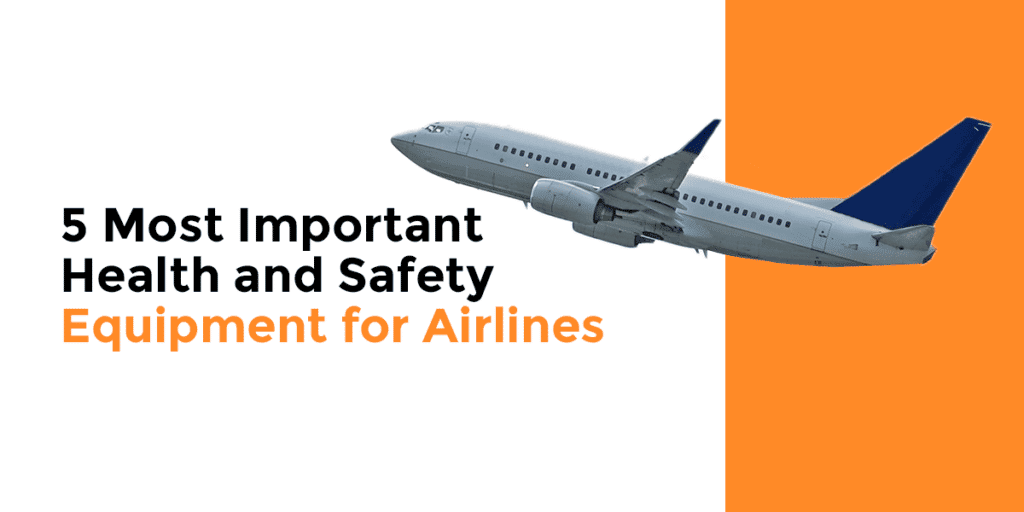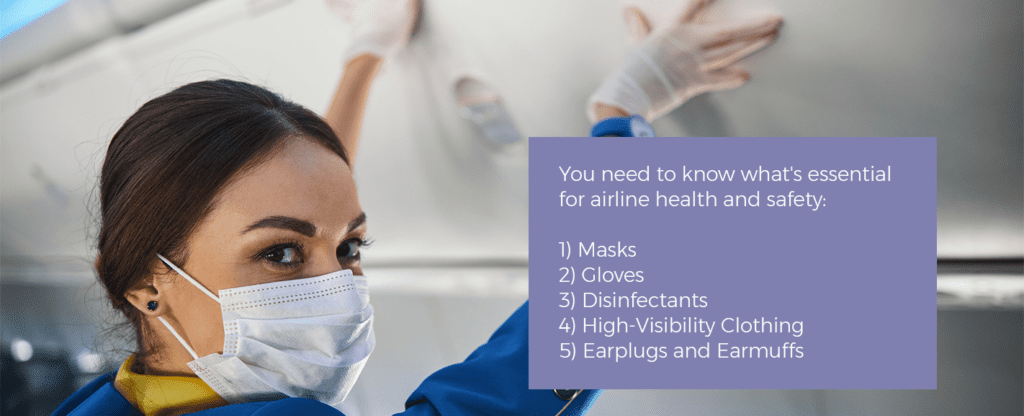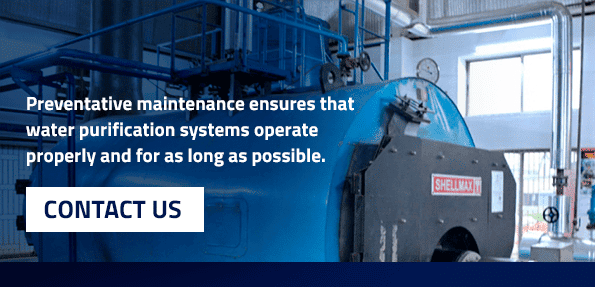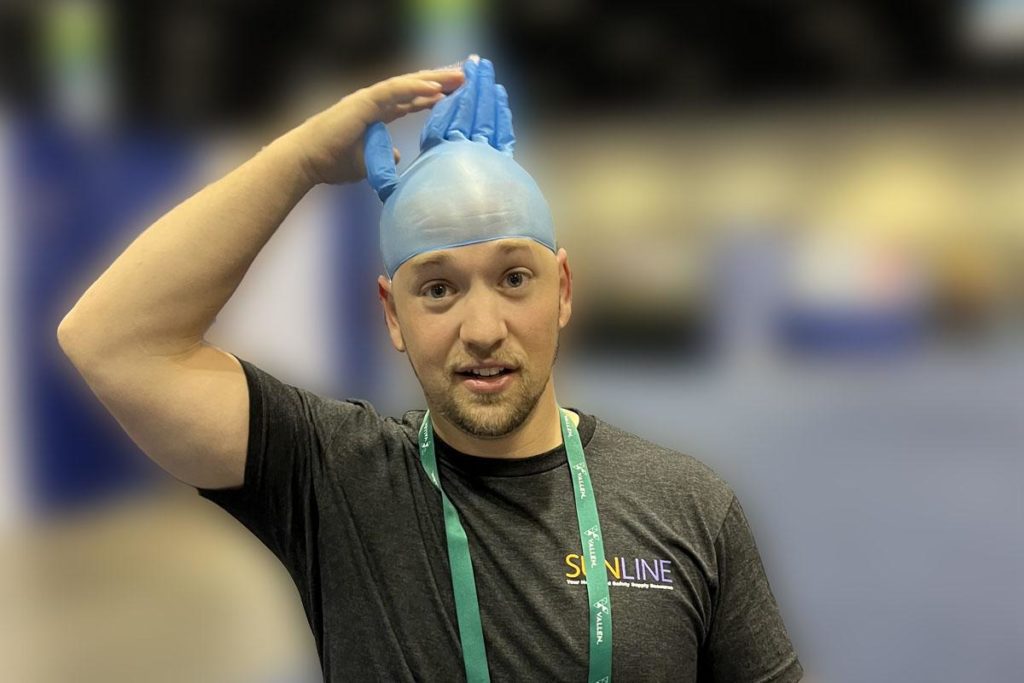
6 Most Important Health and Safety Necessities for Airlines
It’s important to protect yourself and others when it comes to the aviation business, especially since people come into such close contact with one another on aircrafts. It’s also crucial to consider worker safety when ordering health and safety equipment — you want to protect workers from loud noises, viruses and workplace accidents. When you make sure there is enough health and safety equipment on an aircraft and for runway workers, you’re ensuring the protection of customers as well as workers.
To have enough personal protective equipment (PPE) on your aircraft, you need to know what’s essential for airline health and safety. Let’s take a look at the importance of and uses for masks, gloves, disinfectants, marshaling equipment, high-visibility clothing, earplugs and earmuffs.

1. Masks
Masks are crucial in ensuring aviation health and safety, especially due to the COVID-19 pandemic. The Centers for Disease Control and Prevention (CDC) even has guidelines on how to effectively wear, wash and remove face masks. Provide masks for your airline staff — both those working in the air and on the ground — and pass the CDC recommendations onto them so they can wear and take care of their masks correctly.
Face masks should fit snug enough on the face to be functional but not tight enough to constrict airflow. They should also cover the nose and mouth and will often be secured with ear loops or ties. The mask should also have a nose wire at the top, which the wearer can bend around their nose to create a better seal.
In terms of keeping reusable face masks clean, they should be washed according to how frequently they’re worn. For example, if it is worn every day, it should be washed every day. This is why it can be helpful to have more than one face mask so you can rotate them. Ensure that masks are replaced after they become damaged or worn.
Face masks should be removed without touching the mouth, nose or eyes. Once the mask is removed, it can be hung up or put in a personal place.
Per CDC recommendations, try to avoid masks that have exhalation valves. These valves let virus particles escape, making these masks less effective than fabric options without valves.
2. Gloves
Having latex and nitrile gloves on hand has been important since the COVID-19 pandemic began. These gloves can help prevent the spread of disease, but you should also have task-specific gloves available. For example, you might order cut-resistant gloves or gloves used only for handling chemicals that maintenance staff can wear. Your airline workers might also put on gloves before serving food or drinks to help maintain sanitation, and they may need them for first-aid emergencies.
When it comes to disposing of your gloves, ensure there are enough waste bins or hazardous waste disposals where they are needed. You can also encourage workers to wash their hands directly after disposing of their gloves. If you invest in reusable gloves, it’s a good idea to clean them often while providing plenty of gloves for workers throughout the day so they never have to wait for clean ones.
3. Disinfectants
Disinfectants kill microscopic pathogens on surfaces, helping maintain the health and safety of airline workers and customers. Disinfectant wipes offer a convenient way to kill pathogens on high-touch areas, such as:
- Door handles
- Sink faucets
- Railings
- Overhead bin handles
- Armrests
- Tray tables
- Seats
Have staff disinfect these and other frequently touched areas between boardings and flights, both in airports and on planes. Supply bulk disinfectant wipes at boarding stations and on aircraft. For sanitary results, instruct anyone using the wipes to also wear gloves.
4. Marshaling Equipment
Aircraft marshaling requires special equipment, such as marshaling wands and bats. Ground crews use this equipment to help an aircraft pilot maneuver easier. For example, marshaling is helpful for when a pilot is trying to taxi, slow down, turn or shut down their engines.
Marshaling is important because a pilot’s visibility concerning the ground is often limited. Marshaling wands help guide pilots, whether it’s nighttime or daytime. Often, there are different wands used for different times of the day. Marshaling wands can be used in airports and aerodromes to direct traffic.
5. High-Visibility Clothing
High-visibility (hi-vis) clothing comes in different colors and designs, but it is all meant to help you stand out from whatever is in the background. Anyone directing planes will need to wear hi-vis gear to be visible to planes and other runway traffic.
Typically, you would want to purchase clothing that is bright orange, yellow or green. High-visibility clothing can include:
- Vests
- Jackets
- Coveralls
- T-shirts
Other safety equipment, like gloves, helmets and earmuffs, can also have reflective additions and bright colors.
If you’re looking for high-visibility clothing for the daytime, it’s best to order fluorescent and high-contrast options. If you’re looking for high-visibility clothing for the nighttime, locate pieces made of retro-reflective materials that reflect light back to whatever light source is present. In other words, your light source would bounce off of your clothing and make you more visible to people nearby, especially if they are providing the light source.
6. Earplugs and Earmuffs
Hazardous levels of noise come from sources on the ground as well as the air, which is why aviation hearing protection is so important. Ground crew, pilots and other aircraft personnel need a way to protect themselves from harmful levels of noise in the form of earplugs and earmuffs.
Ear discomfort can occur at 120 decibels (dB), while pain can happen at 130 dB and eardrum rupture at 140 dB. When near a jet engine, you could experience anywhere from 130 dB to 160 dB, which is louder than a rock concert, making ear protection essential.
The Federal Aviation Administration (FAA) explains that moldable earplugs made of polyurethane can offer 30 dB to 35 dB of noise protection. Depending on the type used, earmuffs can offer similar results.
According to the FAA, airline employees should wear personal hearing protection in areas like:
- Around aircraft and engines
- Around generators
- Near runways
- On airport ramps

Stock up on Health and Safety Gear With SUNLINE Supply
Here at SUNLINE Supply, you can be sure the aircraft protective equipment you purchase from us is up to their standards and will keep you, your staff and your customers safe. If you need to order in bulk, we have you covered. For some items, you can even get immediate shipping.
If you’re dedicated to airline health and safety, browse through the products we offer on our website or contact us with any questions you may have.


